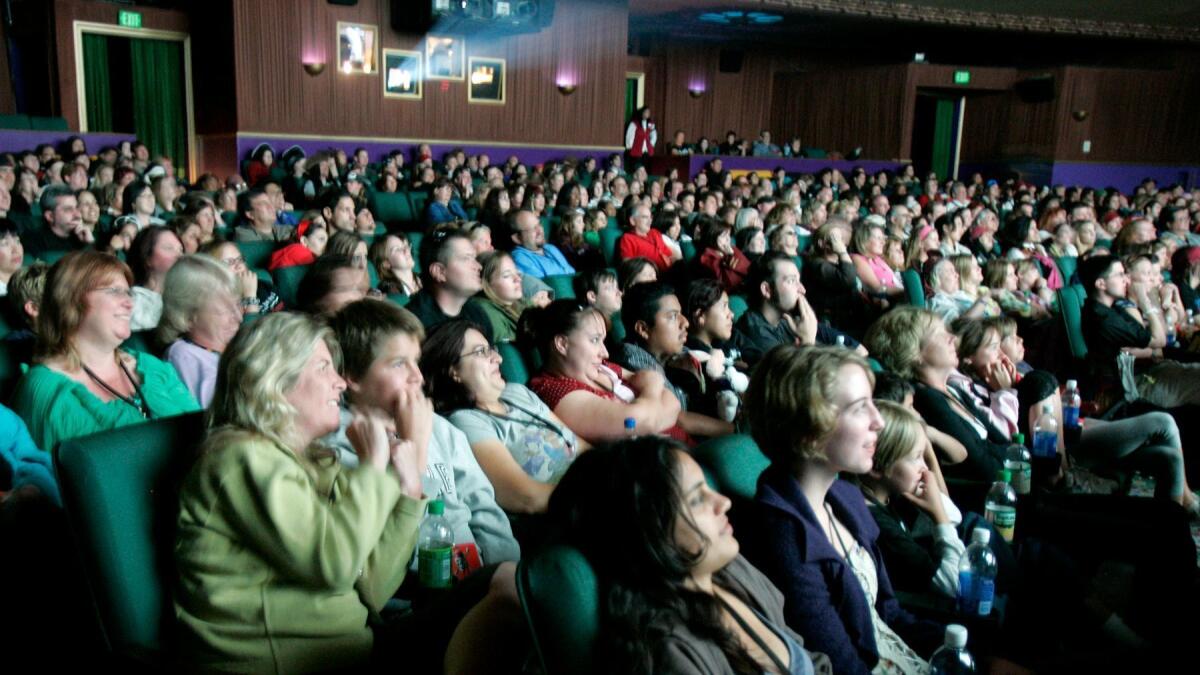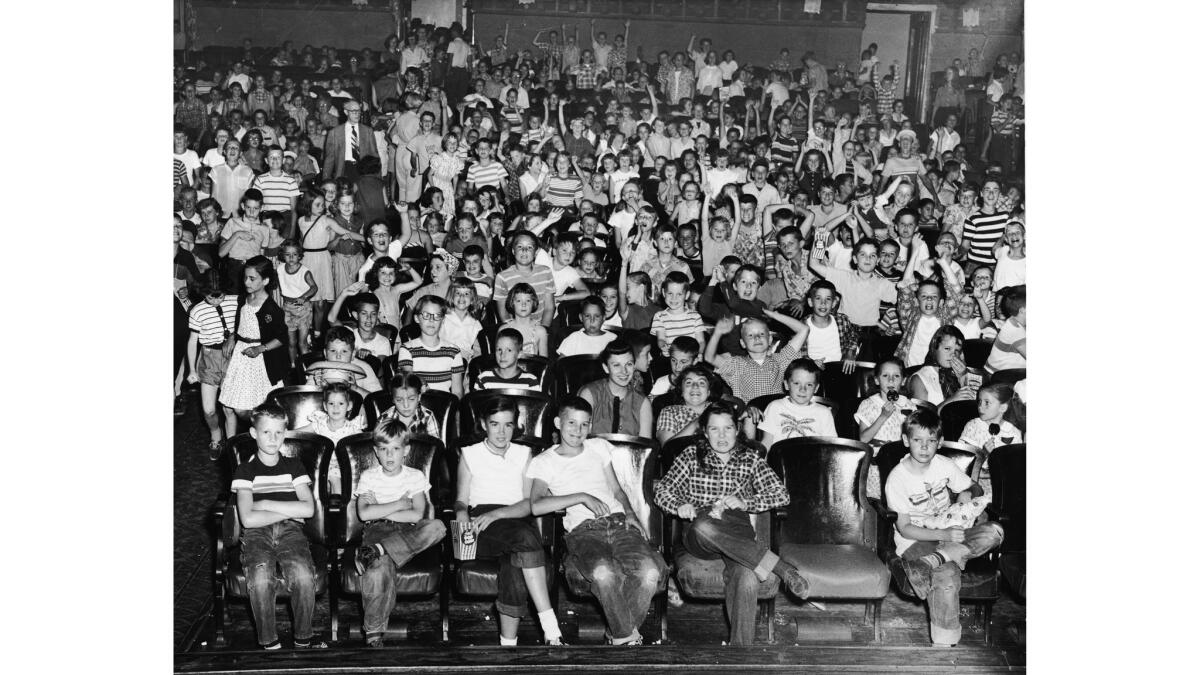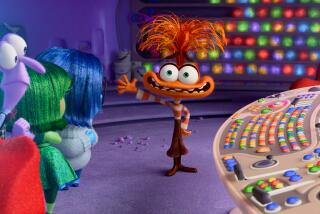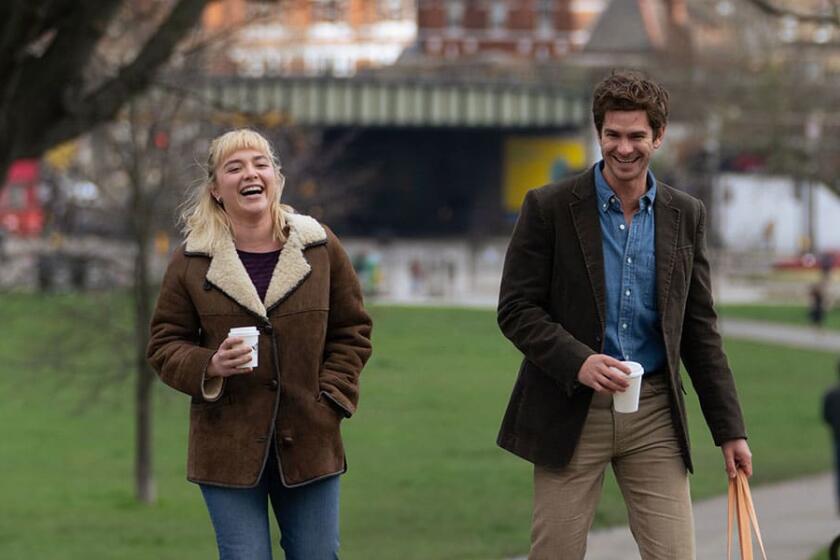Going to the movies isn’t just about the movies; it’s how we grow up

Times film writers talk about their first movie experiences.
Television, videotape, Blockbuster, home theaters, on-demand, Netflix — the cineplex has been under siege from modern upstarts for decades. But it’s impossible to imagine a world without the big screen if only because going to the movies has always been as much about the ritual of “going to” as it is about “the movies.”
“Going to the movies.” It’s a universal phrase that is somehow distinctly American, shorthand for all manner of personal and social significance.
“Going to the movies” is a Proustian madeleine, a series of pencil marks on a doorjamb, a solution to crises ranging from heartbreak to parental exhaustion, a way of being separate but together, present yet adrift.
It’s also something people don’t do as often as they once did. The new technology and quality of television especially has turned viewers into homebodies, never far from their laptops and flat screens. In the shadow of declining box office, theater owners try everything, upgrading their seating, concessions and prices. Studios, on the other hand, double-down on what have always been high-stakes gambles — blockbuster sequels, prequels and reboots.
And everyone wonders why, exactly, the film industry didn’t see the dangers of the megaplex explosion in the go-go ’90s. Some of those faux Spanish monstrosities may indeed wind up repurposed, as low cost-housing or virtual-reality emporiums. But going to the movies? That remains a vital human experience.
The architecture and ethos may vary, reclining seats and table service drawing nesters while true cinephiles disdain even stadium seats (and no doubt, some bright soul will eventually divide the multiplex into “texting” and “no texting” theaters). But there ain’t no home screen high enough, ain’t no smartphone wide enough, no noise-canceling headphones deep enough to ever replace the full-body and mind immersion of going to the movies.
“Going to the movies” is a personal and cultural through-line, an ever-shifting ritual by which we mark our own changing lives.
Most people can name the first movie they remember; mine was “Snow White,” and of course I was terrified by the Evil Queen (who wasn’t?). But I also remember, vividly, the slant of the aisle as we walked to our seats, the red velvet curtains parting to reveal the screen, the large and expectant dark that hung from the ceiling in the moments before the film started rolling.

It was an early glimpse into the world of adults, a public activity that neither excluded nor segregated children. No matter what your age, the experience is the same; we all eat candy at the movies.
Going to the movies we scatter a lifetime’s worth of milestones. There was one theater in my hometown and it did not always show first-run movies. The next closest choices were at least 40 minutes away. My parents took us only when they thought it was worth the drive — a celebration or, eventually, an acknowledgment that my brother and I were now old enough to appreciate grown-up stories. (Though when my father took me and a friend to see “All the President’s Men,” a film that launched a thousand journalism careers, including mine, he was so shocked at the language that he almost took us out of the theater. He called my friend’s parents as soon as we got home to apologize.)
Going to the movies was and remains a centerpiece of our emerging social and independent lives. The movie theater was the first non-school-associated public place my parents let me go to by myself, with money. I still remember the thrill of meeting my friends under the marquee, parsing our dollars out for maximum snacking, giggling and rustling in our seats. Released at last from that stern sideways maternal glance, we were giddy with freedom. (To this day, it’s hard for me to get angry at mildly disruptive kids at the movies; how can you condemn the joy of liberation?)
Going to the movies bookends virtually every romantic relationship — it remains the universal first “real date” experience and when the heartbreak comes, well, as one of my girlfriends told my sobbing 20-year-old self: “You’ll get through it, just go to the movies. A lot.”
Going to the movies, we browse through potential personas — the art-house devotee, the horror addict, the superhero expert or rom-com fan — checking out the crowd and overheard conversations as much as the actual films. Is this who I am? Could I pull off those glasses? Do I really like espresso? The Avengers?
For parents, going to the movies provides a new form of freedom — it’s date night away from the kids or a family outing that, mercifully, requires that everyone sit down and stay quiet. For almost two hours.

When my son was very young, he had two speeds — nonstop and asleep. Except when we took him to the movies. There he would sit, rapt, with no fidgets, complaints or demands (except when he managed to spill all his popcorn, which was often). His sister was the same. At a certain acrimonious period in their lives, when they could not be in the same room without one of them erupting in tears, I took them to the movies at least twice a week — it was the only place where we could all quietly enjoy the same thing at the same time, with no arguments. (And when that popcorn spilled, by God, I just bought more.)
For several years I was the official movie mom, happy to load a bunch of kids into the van, ration popcorn and candy, make sure everyone went to the bathroom before the film started. It was certainly the most relaxing form of play date and invariably led to lively conversations on the way home — if you really want to get to know a group of dirt-kicking pre-teen boys, take them to “Iron Man” and then ask them if Tony Stark is really a superhero.
Through my children I saw the timeline of “going to the movies” play out even more clearly. The theater was the perfect space to experiment with their freedom. When were they ready to visit the restroom solo? See PG-13 films? Be dropped off at the theater? Drive themselves? To a midnight show?
My son is now in college, his sister an (almost) senior in high school, so they go to the movies on their own; they even occasionally take their 10-year-old sister along. Which is good because one sign of middle age is a growing intolerance for sitting through duds like “Brother Bear.” (My husband, on the other hand, prefers the duds; how else can you be actively pleasing your child and her friend while also getting some very necessary shut-eye? And, should he snore, bonus points for general hilarity.)
Technically, it is easier to gather the family around the big screen. But in our house that rarely happens. We still go to the movies together, though. It’s still exciting, the rush to get everyone in the car, our collective entrance into popcorn-scented splendor, the passing down of drinks and candy, and the moment of theatrical twilight when the descending dark meets the rising glow of the screen.
I take my husband’s hand and send a maternal side-eye down the row, but no one is rustling or whispering or bickering.
And nowadays, even popcorn spills are rare.
ALSO
Rumbling seats. Virtual reality. Booze. How cinemas are adapting to uncertain future
The architecture of moviegoing: Can the multiplex stay in the picture?
It’s like ‘Cheers’ for movie lovers: An inside look at Quentin Tarantino’s New Beverly Cinema
More to Read
Only good movies
Get the Indie Focus newsletter, Mark Olsen's weekly guide to the world of cinema.
You may occasionally receive promotional content from the Los Angeles Times.











